| ALL |
|
MODERNISM
| OVERVIEW |
|
| |
What does modernism mean today when many celebrate the "end" of the project of modernity, or claim its "incompleteness"? More importantly, could any discussion of modernism today avoid the fact that many countries, which were peripheral to the early stages of modernization, are now formulating their own understanding of modernism in general and modern architecture in particular?
Among other connotations, the etymology of the word "modern" suggests a manner or way of acting, a mode, but also the form or way of being. Another helpful word derived from mode is "modish," alluding to the state of being in the latest style and fashion. To be stylish means to submit to the constant flow of transformation that is instigated by modernization. Transience is perhaps one of the most important aspects of modernity. It suggests experiencing the "now" of the present. This understanding of the word "modern" emerged in the 19th century. "By modernite," Charles Baudelaire wrote in 1863, "I mean the ephemeral, the fugitive, the contingent, the half of art whose other half is the eternal and the immutable." Before that, the term was discussed and understood differently. In the 17th century, the idea of "modern" was used in conjunction with "ancients"; most remarkable was the case of the so-called quarrel between the ancients and the moderns. This was a dispute about history and the relationship of the past to the present. Whereas some literary scholars of that century saw the past in a perfect state of values and norms, others, the moderns, questioned the validity of such a stronghold on the past. The historicity of the idea of modernity, however, is better understood when "modern" is supposed with the secularization of value and abstraction, when the authoritative role of the past is superseded and a different order of relationships among people and nature has emerged that is contingent on the flow and accumulation of capital and technological innovations.
Was the relationship between modernity and modernism transparent? In retrospect, one can agree with T.J. Clark that "modernism had a truck with a modernity not yet fully in place" (Clark, 1999). It was indeed the blindness of modernity, its nihilism, and the drive for perpetual transformation that alienated modernism from its historical context. Since its inception, modernism had to confront a situation that was marked by the remnant of antiquity and even a peasant lifestyle that, again according to Clark, "resisted the disenchantment of the world." While industrialization was rapidly transforming the old order of the medieval towns of Europe, it took architects a long time to accommodate the disciplinary history of architecture to the demands of the new society and industrial materials and techniques. Some scholars, however, argue that the beginning of modernism should be pushed back to the early 18th century when intellectual work broke with the classical discourse on art and architecture. The rupture was considered formative for the autonomy of artistic creativity, even though its horizon soon had to be modified according to the subjective and objective conditions of the rising industrial bourgeois society.
As the cultural attribute of modernity, modernism is rather a new phenomenon. It was not until modernity was questioned, after World War II, that the idea of modernism was sought to represent the totality of a movement that most architectural historians identify with the years spanning from 1850 to 1945. The search for an answer to one of the fundamental questions of modern architecture, "In What Style Should We Build," framed by Heinrich Hübsch, the 19th-century German architect, was, in the 1940s, reduced to the idiom of the International Style.
Such was the verdict of some historians and architects who channeled modernism through a speculative reading of the Zeitgeist and its presumed linear and coherent development. Historicism prevailed in Nikolaus Pevsner's "Pioneers of Modern Movement," first published in 1936, though his many generalizations stayed intact for a couple of decades. Beneath the unified vision of modernism depicted in the early writings, the history of modern architecture lies diverse strategies attempting to formulate an "objectivity" that shares the following concerns: first, how to reformulate a masonry-based craft language with materials and techniques produced by steel, concrete, and glass industries. Second, what is the future of the art of building in the metropolis where architecture had to confront the anguish unleashed by the production and the consumption system of capitalism? This observation underlines the heterogeneous character of modern architecture, but more importantly, it suggests that architects understood modernism differently than historians or theoreticians. Still, among architects, modernism and the effect of modernization on architecture were interpreted variously: The avant-garde attempted to picture an image of architecture that formally and aesthetically was informed by a sociocultural situation that was not yet realized. For them, architecture was to play a constructive role in the realization of utopias that were mostly nurtured by the formative themes of the Enlightenment. Progress and the creation of artistic work unimaginable previously were sought as basic to modernity. For the avant-garde, practicing individually or collaborating in groups, the advocacy for the autonomy of art and architecture was essential. Autonomy was sought as the passing moment of art toward its destiny: the reintegration of the work of art into the life-world. Abstraction was appropriated for its capacity to open a space through which creative work could flourish independently of the realities of a given situation.
Futurists and the Dutch De Stijl, among other avant-garde groups, radicalized the holistic vision of the Romantic modernists, propagating a "modernist" relationship between architecture and society that today seems naive in its understanding of the stakes involved in the nihilism perpetuated through modernization. Others pursued a rather modest agenda; these architects attempted to approach modernity through the architectural tradition of a particular region. The geographic distance separating the Scandinavian countries and America from the metropolitan centers of the Europe of the early decades of the last century produced a regionalist architecture, the best of which is exemplified in the work of Alvar Aalto and Frank Lloyd Wright. Both tendencies (the avant-garde and the others), however, shared the following convictions: that in modernity, there is no room to continue the symbolic language of classical architecture; that it is necessary to rethink the planimetric organization of architecture based on new building types and to conceive the interior spaces of domestic architecture according to the spatial needs of modern life that were unfolding in the metropolitan centers; and finally, that technology is essential for the formation of modern architecture.
The question concerning technology is critical for understanding the different facets of modernism. Although technical reproducibility did not have the same effect on architecture as it did on visual arts (like film and painting), nevertheless, the subject's discussion could shed some light on the state of mental and technical possibilities that informed modern architecture. Before modernization of techniques, there was no understanding of technology as it is known today. A departure from a concept of fabrication in which technique is congenial to the image of the final product was instrumental for the modernization of architecture's métier. To be modern, architecture had no choice but to merge into the technological universe of capitalism. Technification of architecture meant emptying the tectonic of any import to architecture. The use of technologies invented outside of architecture's interiority (the disciplinary history of architecture) aligned design with the exigencies of technical planning. That capitalist development took away certain tasks from architecture is not only clear from architectural ideologies sought by the historical avant-garde and some sectors of the Bauhaus school but, more importantly, it is exemplified in the linguistic polarities differentiating, for example, Peter Behrens's AEG Turbine Factory, Berlin, 1908-09, from Adolf Meyer and Walter Gropius's design for Fagus Werk, Alfeld-an-der-Leine, Germany, 1911.
These buildings demonstrate the fragmentation of the craft of building but also the struggle of architects to retain a level of symbolic meaning, aesthetically or otherwise, that was no longer attainable. It was left to some post-war architects whose work discarded the 19th century's concern for the symbolic expression of structure. Archigram of Great Britain, for one, channeled architecture's rapport with the machine through transparency of form and structure. At the constructive level, modernism offered architecture a structural frame system, the spatial and tectonic potentialities of which vary as one moves from Le Corbusier's Villa Savoye, Poissy, France (1929-31), to Mies van der Rohe's design for the German Pavilion, World Exhibition, Barcelona (1925). These two buildings disclose different interpretations of modernism: Le Corbusier's lessons of Rome found its outlet in the Domino frame, a modernist state of seeing and making in which construction "plays the role of the subconscious," discussed by Sigfried Giedion five years after the first publication of Le Corbusier's "Vers une Architecture" (Towards a New Architecture) in 1923.
Mies instead articulated the architectonics of "exhibition value," a concept coined by Walter Benjamin. Mies showed one way of internalizing the nihilism of modernity into architecture. In the pavilion, the suggested transparency between modernity and modernism is shattered by the recollection of what Baudelaire would have called the archaic half of the art of building; the matter-of-fact quality of column, wall, and roof, but also the deconstruction of the metaphysics of the interior space. If modernism succeeded in stimulating various interpretations of the new objectivity, its horizon was minimized when architecture met the city, the site where many facets of capitalism were experienced directly. This much is clear from the Reliance Building (1890-95), designed by Daniel H. Burnham and Company, Chicago, and Mies's Seagram Building (in cooperation with Philip Johnson), New York City (1958). In both cases, design strategies disclose a direct link with the institutions and techniques operating in the city. Each work also articulates a particular architectonic response to the process of the accumulation of capital: from the production of building as a pure sign to an attempt to renounce the mechanism of the city.
To speak of the disjunction between modernity and modernism, it is enough to remember how quickly the "Chicago School" of architecture became a normative style and how soon Mies's curtain wall system was subjected to mass-reproduction and repetition to the point that postmodernists could claim, "less is bore," a satirical twist on Mies's famous dictum, "less is more." Modernity has constantly been in conflict with its own context—that is, architecture and the city. It has also been in confrontation with any intellectual work suggesting a vision of modernism that cannot accommodate itself to the logic of modernization. If Karl Marx was correct in suggesting that in capitalism, "all that is solid melts into air," then what happens to the art of building for which durability is still one of its essential aspects? It is only through the act of construction that modernization finds the space to operate fully. The disjunction between space and time, pertinent to architecture's resistance to modernization, is addressed by the Austrian architect Adolf Loos. To him, the architect was a Roman builder who had learned Latin. In criticizing both the Deutscher Werkbund and the Vienna Secessionist groups, Loos shunned designing the style (ornament) appropriate to modern times. He also did not value technology as highly as his contemporaries did. The architect's house (Looshaus, Michaelplatz, Vienna, 1909-11) is an analogue to the confrontation of the culture of building with modernity. It also speaks for Loos's conviction that only tombs and monuments deserve the name architecture. The interior spaces of most of his houses too were conceived in line with the same beliefs. The idea of Raumplan intermingles "place" with space and time. One could suggest that for Loos, modernism was not a matter of subjective speculation; it was rather already there, in the actuality of modernization, necessitating the rethinking of architectural tradition in the matrix of human labor, money, and material, but also in making a space where "things" are reminded of their collective use-value. In a different time and place, "things" were collected to mark the dialogue between modernism and socialism.
The work of Russian Constructivists discloses a different approach to technology and abstraction. In the absence of any organized industrial institutions, and inspired in part by the ideas of Boris Arvatov and other theoreticians, most Constructivists invested in their forms of material culture and its laden potentiality. They produced a body of work that desired to resist the reduction of the world of consumption to mere commodities. The uniform use of wooden structural elements in Alexander Rodchenko's constructs and Konstantin Melinkov's USSR Pavilion at the International Exhibition of Decorative Arts, Paris (1925), does not mimic the rational organization of the world of technology. Here technique is derived from material, and both are perceived to be at the service of material culture. This is clear from Vesnin brothers' Pravda Building, Moscow (1924), where the act of construction is intertwined with the realm of man—machine-communication, underlining the collective dimension of architecture. Most artists and architects associated with Constructivism assumed that they had the historical opportunity to capture the time/space dialectics of modernization and could freeze its image in a constructed place where the anticipatory potentialities of modernism could avoid ideology.
Paradoxically, it was the realm of ideology that made constructivists see and interpret objects differently—different among themselves, but also different from the vision of the so-called vanguard party. That at one point the state realized its own ideological survival in the production of practical objects is clear from its adherence to an instrumental idea of “plan” that slowly diminished the aura of revolution and turned the original energy of constructivist objects into a normative praxis. Not too late, constructivists had to abandon every norm except those associated with the classical language of architecture. This was an uncanny return to the “natural” state of the object, an ideological rebuff to the crisis of the object unleashed by modernization. It also confirmed that in modernism, the ideology of the plan could not contradict the instrumental logic of modernization. If all heroes eventually die, so did the heroes of collectivism and the romantic (i.e., modern) genius. Modernization had its own heroes at stake in the United States: Mickey Mouse and other icons of the culture industry, and their landscape, Disneyland, heralded an image of modernism that was mass-produced and ready to be delivered, but more important, it opted for an economy of sign, where pure exchange value marks the difference between one representative order and another. In this no-man’s-land, abstraction and relativism prevail, time is disconnected from its past and future, and everything is memory, if not the memory to become.
The standstillness of the time, the time that celebrates the end of modernism, saturates the space of imagination too. Many contemporary scholars have called for the “death of the subject,” and the “end of history.” In postmodernity, eclecticism returned to the architects’ and designers’ drawing board, and in search for the archaic types or formal autonomy, architecture lost its “meat.” Since the post-war years, architects have moved further from modernity, regardless of how much their work is informed by the experience of modern architecture.
The Team X group in the Netherlands, and Louis I. Kahn in the United States, reformulated architecture within its own phenomenal space or charged architecture with civic values, respectively. No design strategy—even those purposed by the advocates of the “greys” or the “whites”—could remain immune to the level of abstraction permeating as technology moved its realm of operation from the technical to the cultural. This development is dramatized today by the perceptual horizon opened by electronic technologies. Thus, the physical distance once governing the abstract aesthetic of early modern art and architecture has been largely neutralized by computer-generated images that have become enmeshed in every aspect of the present world. The situation of postmodernity endorses devaluation of all values and architecture’s reduction to a sign. Nevertheless, commodification and technification of architecture are not total.
Although modernism was not conceivable without the modernization of the various processes involved in the production of architecture, and even though skills and techniques operating in handwork were mostly discarded during the early stages of modern architecture, there still remains an artisanal residue in architecture that resists architecture's total reduction to a commodity form. In addition, many interpretations of modernism, permeating since the 1960s, suggest that history itself failed modernists. Uncertain as we enter the new millennium, one thing seems to be clear: the historical claim of the project of modernity still hovers above architects and historians like a ghost. What this means is that today, architects and historians are facing a body of work—modern architecture—that was not available to modernists. This necessitates a different approach to the immediate past: instead of total negation or affirmation of modernism, the task ahead should be to inflect the present material world by recollection of the tectonic culture of modern architecture.
Gevork HARTOONIAN
Sennott R.S. Encyclopedia of twentieth century architecture, Vol.2 (G-O). Fitzroy Dearborn., 2005. |
| |
|
| |
|
| |
|
| |
|
| |
|
| |
|
| |
|
| GALLERY |
|
| |
|
| |
 |
| |
1908-09, AEG Turbine Factory, Berlin, GERMANY, Peter Behrens |
| |
|
| |
 |
| |
1911, Fagus Werk, Alfeld-an-der-Leine, GERMANY, Walter Gropius |
| |
|
| |
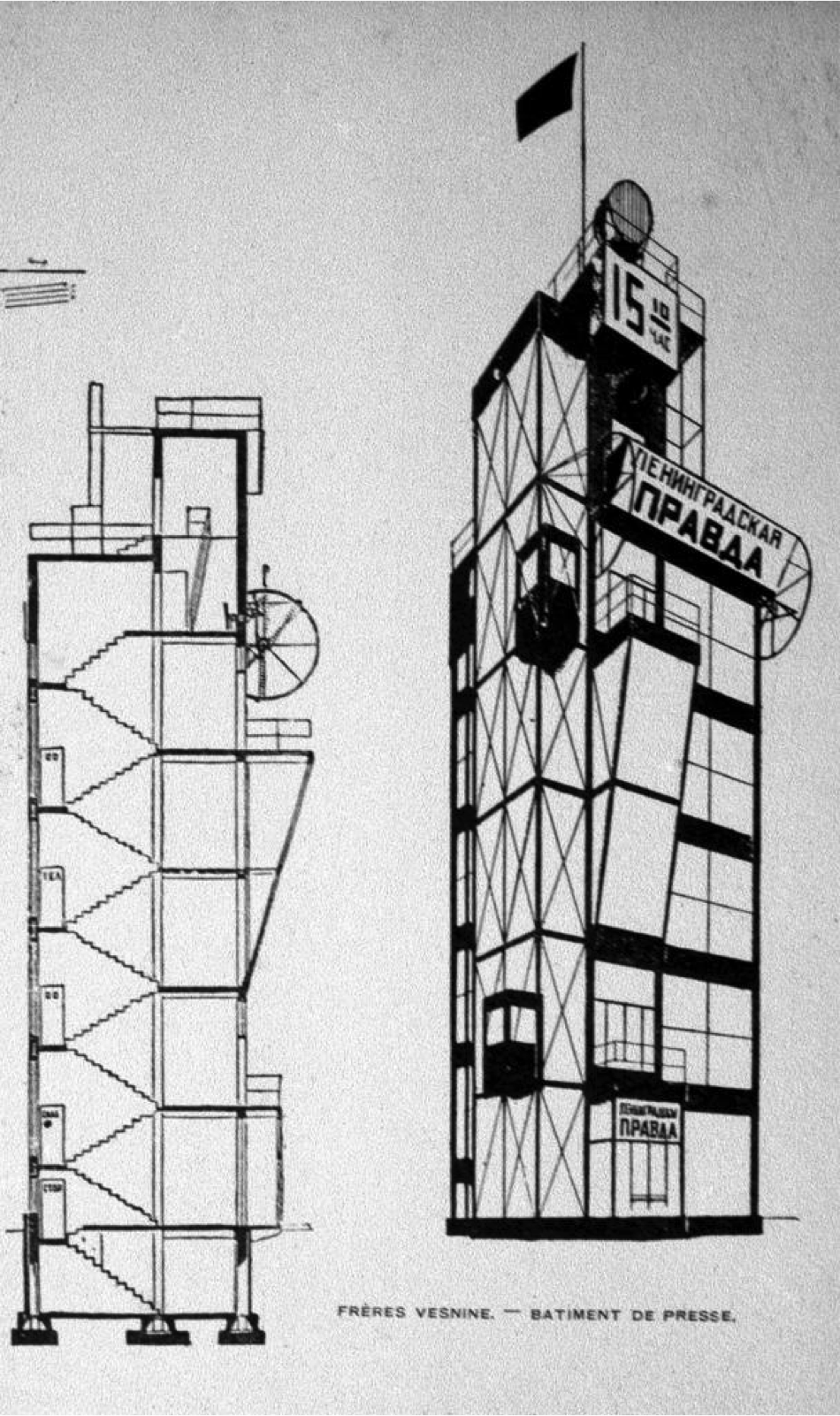 |
| |
1924, Pravda Building, Moscow, RUSSIA, Vesnin brothers |
| |
|
| |
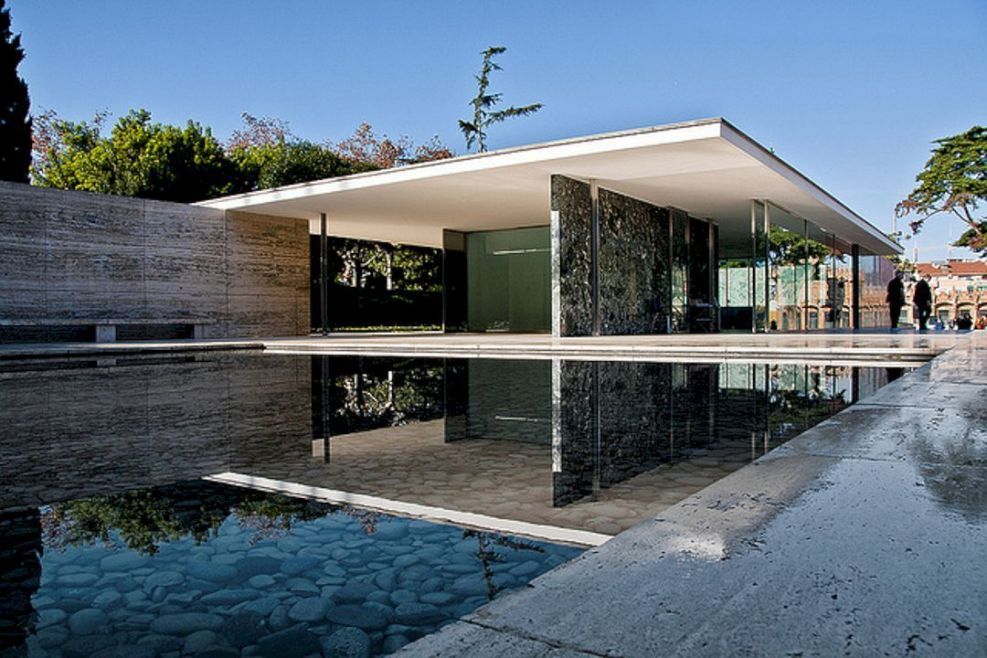 |
| |
1925, the German Pavilion, World Exhibition, Barcelona, SPAIN, Mies van der Rohe |
| |
|
| |
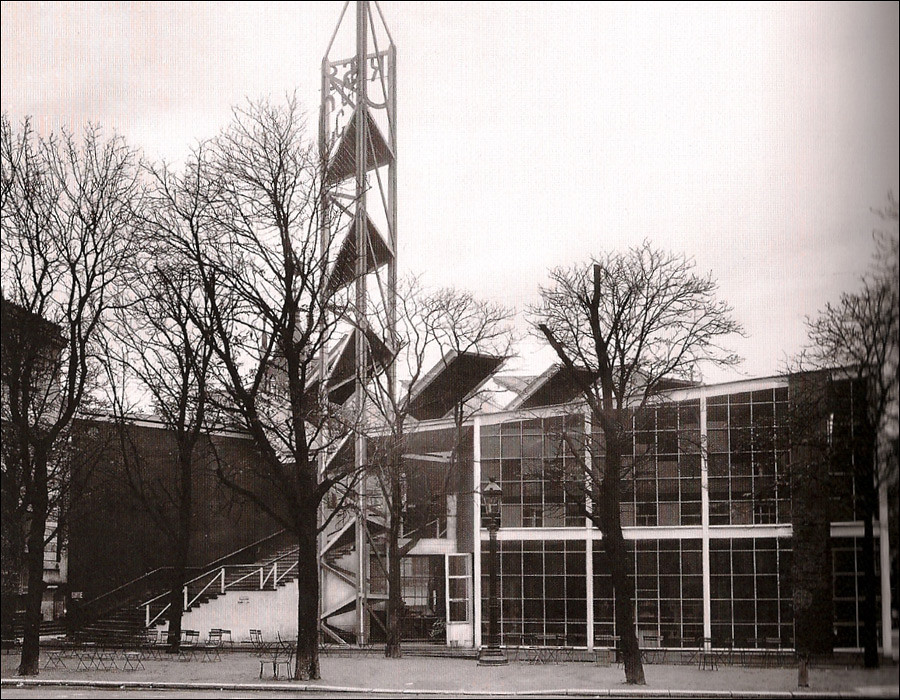 |
| |
1925, USSR Pavilion at the International Exhibition of Decorative Arts, Paris, FRANCE, Konstantin Melinkov |
| |
|
| |
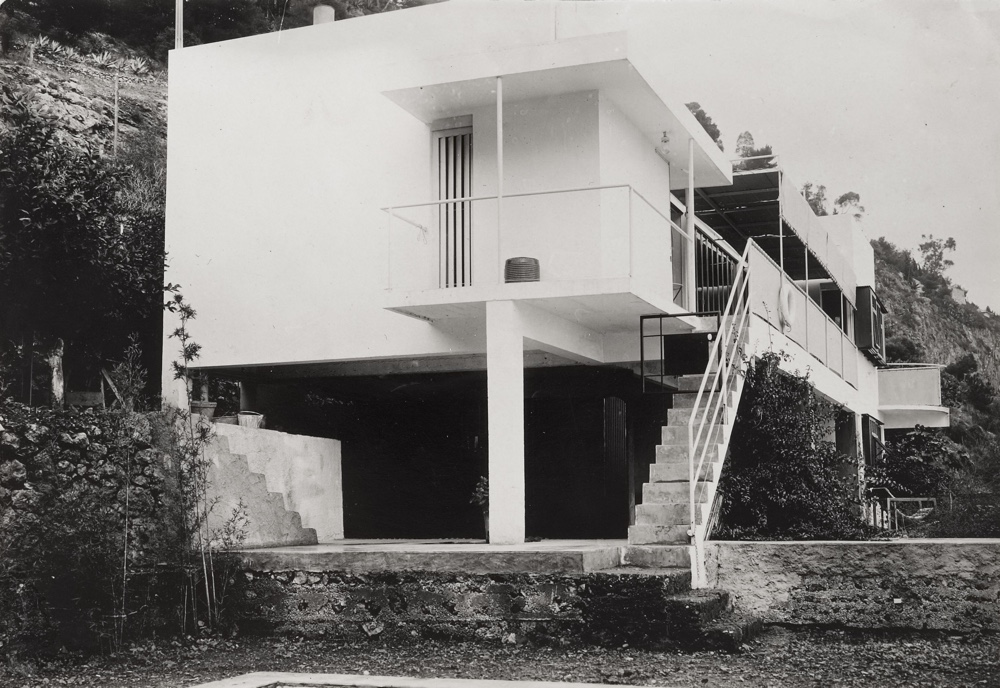 |
| |
1926-1929, E-1027 House, Roquebrune Cap Martin, FRANCE, EILEEN GRAY |
| |
|
| |
 |
| |
1928–1929, Paimio Sanatorium,
Paimio, Finland, ALVAR AALTO |
| |
|
| |
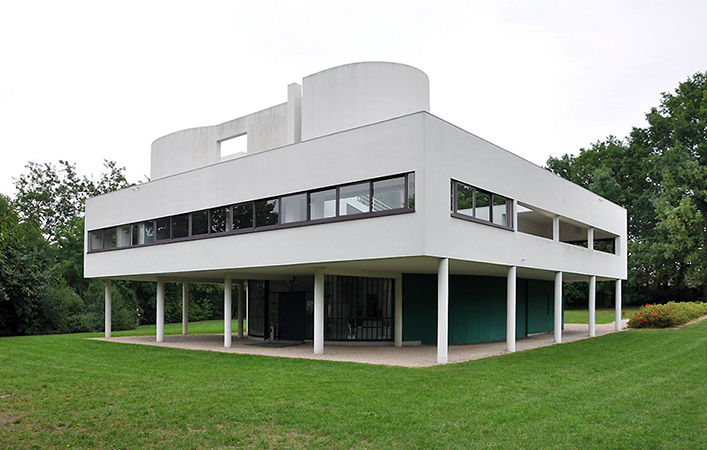 |
| |
1929-31, Villa Savoye, Poisy, FRANCE, Le Corbusier |
| |
|
| |
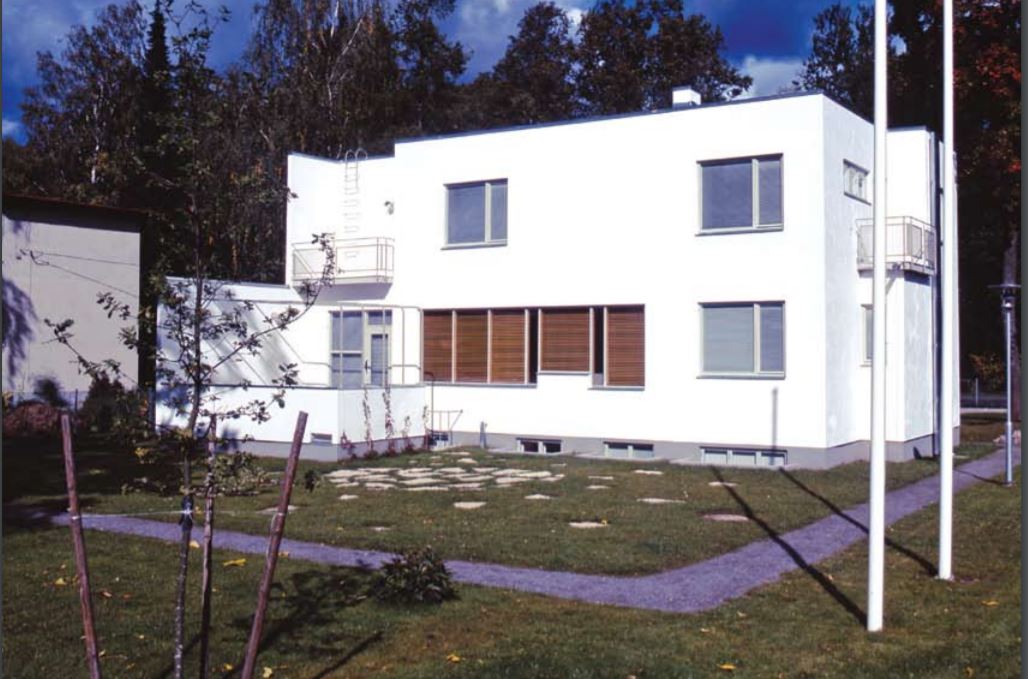 |
| |
1932, Villa Tammekann, Tartu, Estonia, ALVAR AALTO |
| |
|
| |
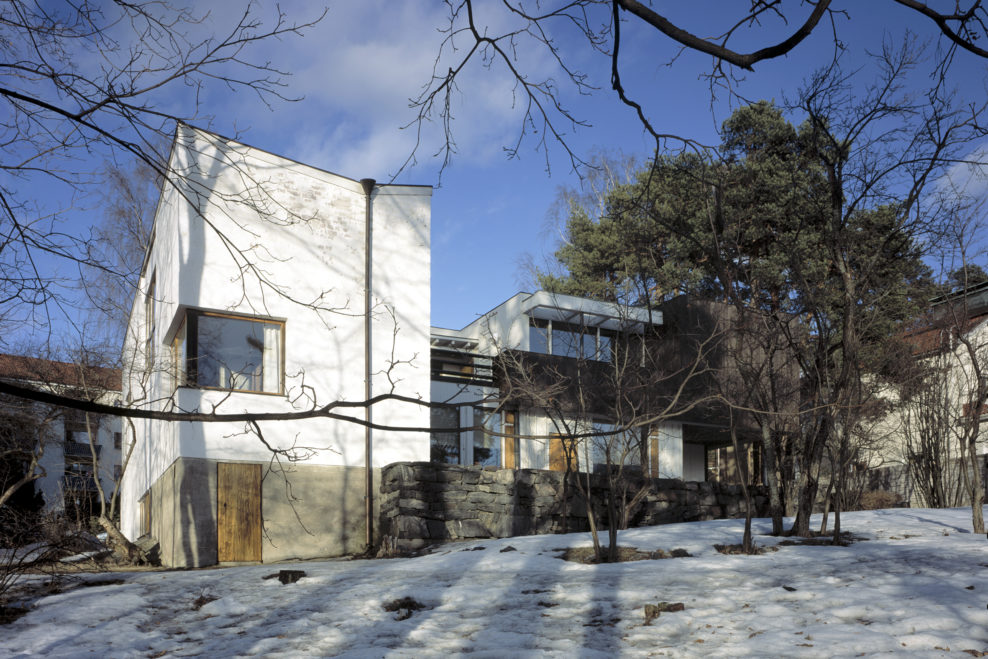 |
| |
1935-1936, THE AALTO HOUSE,
Helsinki, Finland, ALVAR AALTO |
| |
|
| |
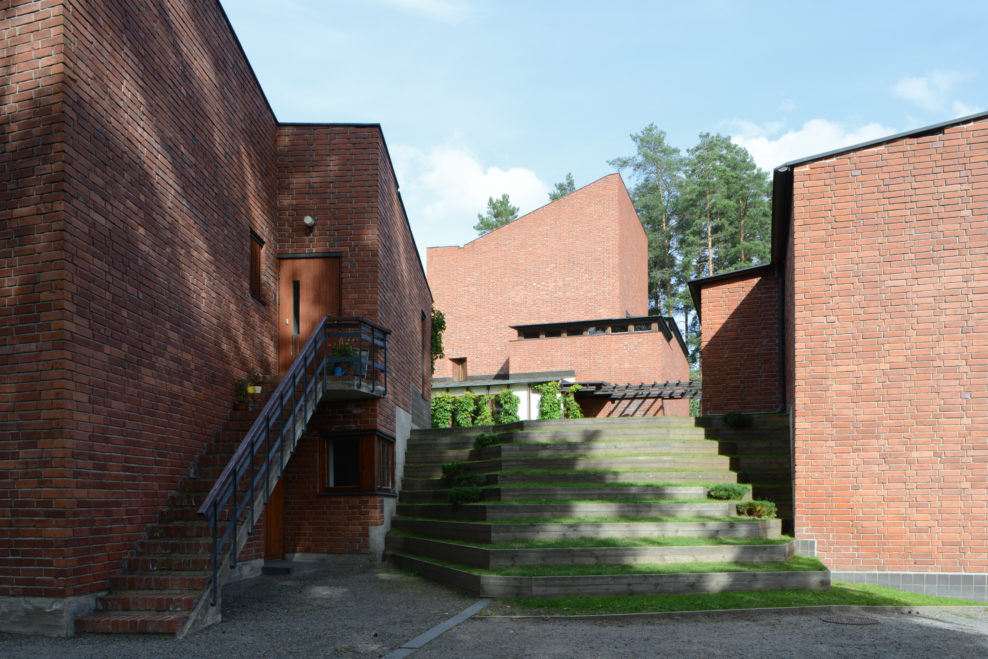 |
| |
1949-1952, Säynätsalo Town Hall,
Säynätsalo, Finland, ALVAR AALTO |
| |
|
| |
.jpg) |
| |
1958, Seagram Building, New York City, USA, Mies van der Rohe (in cooperation with Philip Johnson) |
| |
|
| |
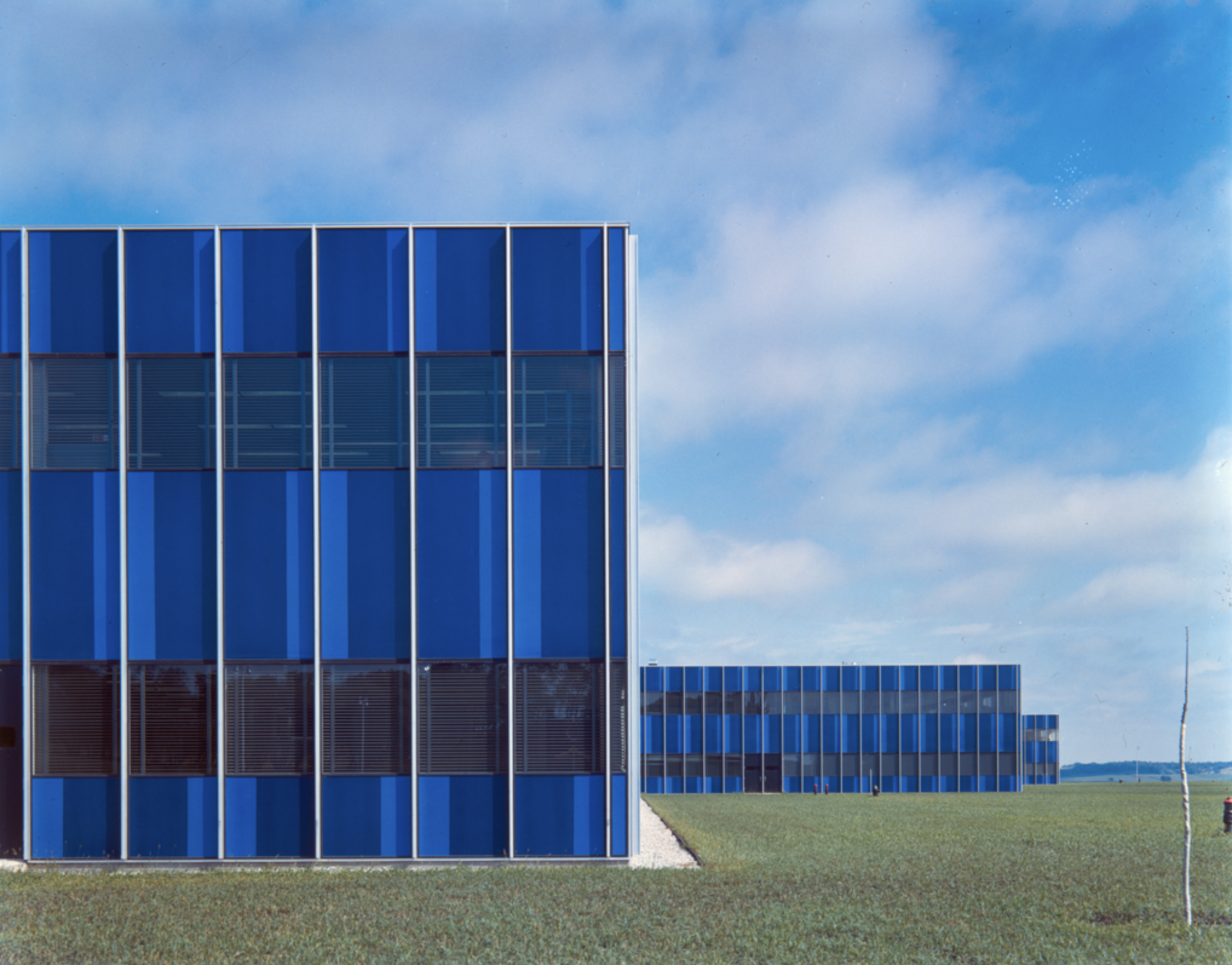 |
| |
1959, IBM Manufacturing Plan, Rochester, USA, EERO SAARINEN |
| |
|
| |
, New York, USA, EERO SAARINEN.png) |
| |
1964, Columbia Broadcasting System Headquarters (CBS Building), New York, USA, EERO SAARINEN |
| |
|
| |
|
| |
|
| |
|
| |
|
| |
|
| |
|
| ARCHITECTS |
|
| |
|
| |
AALTO, ALVAR
BURNHAM, DANIEL H.
LE CORBUSIER (Jeanneret, Charles-Édouard)
GRAY, EILEEN
GROPIUS, WALTER
JOHNSON, PHILIP
KAHN, LOUIS I.
LOOS, ADOLF
MELNIKOV, KONSTANTIN STEPANOVICH
MIES VAN DER ROHE, LUDWIG
SAARINEN, EERO
VESNIN, ALEXANDER, LEONID VESNIN, AND VIKTOR VESNIN
WRIGHT, FRANK LLOYD |
| |
|
| |
|
| |
|
| |
|
| |
|
| |
|
| |
|
| BUILDINGS |
|
| |
|
| |
1908-09, AEG Turbine Factory, Berlin, GERMANY, Peter Behrens |
| |
|
| |
1911, Fagus Werk, Alfeld-an-der-Leine, GERMANY, Walter Gropius |
| |
|
| |
1924, Pravda Building, Moscow, RUSSIA, Vesnin brothers |
| |
|
| |
1925, the German Pavilion, World Exhibition, Barcelona, SPAIN, Mies van der Rohe |
| |
|
| |
1925, USSR Pavilion at the International Exhibition of Decorative Arts, Paris, FRANCE, Konstantin Melinkov |
| |
|
| |
1926-1929, E-1027 House, Roquebrune Cap Martin, FRANCE, EILEEN GRAY |
| |
|
| |
1928–1929, Paimio Sanatorium,
Paimio, Finland, ALVAR AALTO |
| |
|
| |
1929-31, Villa Savoye, Poisy, FRANCE, Le Corbusier |
| |
|
| |
1932, Villa Tammekann, Tartu, Estonia, ALVAR AALTO |
| |
|
| |
1935-1936, THE AALTO HOUSE,
Helsinki, Finland, ALVAR AALTO |
| |
|
| |
1949-1952, Säynätsalo Town Hall,
Säynätsalo, Finland, ALVAR AALTO |
| |
|
| |
1958, Seagram Building, New York City, USA, Mies van der Rohe (in cooperation with Philip Johnson) |
| |
|
| |
1959, IBM Manufacturing Plan, Rochester, USA, EERO SAARINEN |
| |
|
| |
1964, Columbia Broadcasting System Headquarters (CBS Building), New York, USA, EERO SAARINEN |
| |
|
| |
|
| |
|
| |
|
| |
|
| |
|
| |
|
| MORE |
|
| |
INTERNAL LINKS
Bauhaus; De Stijl; International Style; Postmodernism; Team-X;
FURTHER READING
Arendt, Hannah, The Human Condition, Chicago: University of
Chicago Press, 1974
Benjamin, Walter, Selected Writings, vol. 3, 1935-1938, Cambridge:
‘The Beknap Press, 2002
Baudelaire, Charles, The Painter of Modern Life and Other Essays,
translated by Jonathan Mayne, New York: Da Capo Press, 1986
Berman, Marshall, All shat is Solid Melts into Air: The Experience of
Modernity, London: Verso, 1982
Buck-Morss, Susan, Dreamworld and Catastrophe: The Passing of
Mass Utopia in East and West, Cambridge, Massachusetts: MIT
Press, 2000
Cacciari, Massimo, Architecture and Nihilism: On the Philosophy of
Modern Architecture, New Haven, Connecticut: Yale University
Press, 1993
Calinescu, Matei, Five Faces of Modernity: Modernism, Avant-Garde,
Decadence, Kitsch, Postmodernism, Durham, North Carolina:
Duke University Press, 1987
Clark, T. J., Farewell to an Idea: Episodes from a History of
Modernism, New Haven, Connecticut: Yale University Press,
1999
Foster, Hal (editor), The Anti-Aesthetic: Essays on Postmodern Culture,
Port Townsend, Washington: Bay Press, 1983
Frampton, Kenneth, Labour, Work and Architecture, New York:
Phaidon Press, 2002
Frampton, Kenneth, Modern Architecture: A Critical History,
London: Thames and Hudson, 1980
Giedion, Sigfried, Building in France, Building in Iron, Building in
Ferro-Concrete, Santa Monica: The Getty Center for the History
of Art and the Humanities, 1995
Hartoonian, Gevork, Modernity and its Other; A Post-Script to
Contemporary Architecture, College Station: Texas A & M
University Press, 1997
Hartoonian, Gevork, Ontology of Construction: On Nihilism of
Technology in Theories of Modern Architecture, Cambridge:
Cambridge University Press, 1994
Heynen, Hilde, Architecture and Modernity, Cambridge,
Massachusetts: MIT Press, 1999
Herrmann, Wolfgang, In What Style Should We Build: The German
Debate on Architectural Style, Santa Monica, California: The
Getty Centre for the History of Art and the Humanities, 1992
Hitchcock, Henry-Russell, and Philip Johnson, The International
Style, New York: Norton, 1966
Pevsner, Nikolaus, Pioneers of Modern Design, New York: Penguin
Books, 1976
Tafuri, Manfredo, Architecture and Utopia: Design and Capitalist
Development, Cambridge, Massachusetts: MIT Press, 1976
Vattimo, Gianni, The End of Modernity, Baltimore, Maryland: The
John Hopkins University Press, 1988
Venturi, Robert, Complexity and Contradiction in Architecture, New
York: The Museum of Modern Art, 1996
Williams, Raymond, The Politics of Modernism, London: Verso,
1989
Modernism
Sibyl Moholy-Nagy: Architecture, modernism and its discontents
|
| |
|
|

